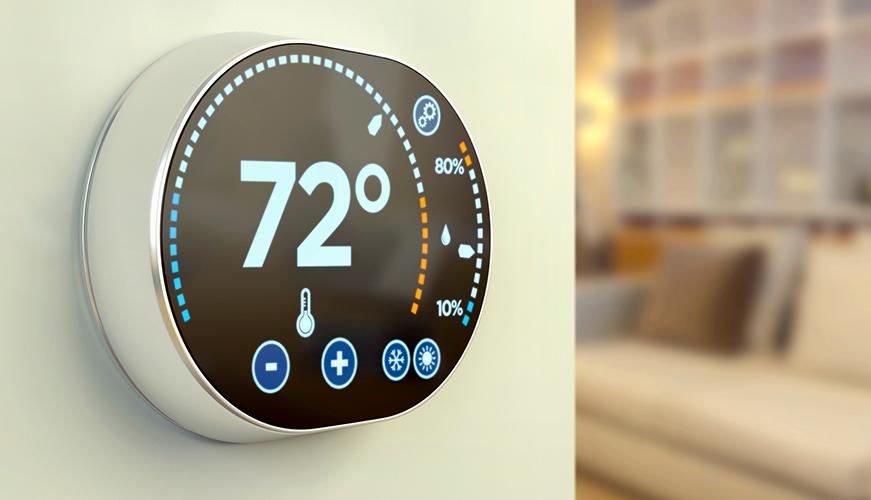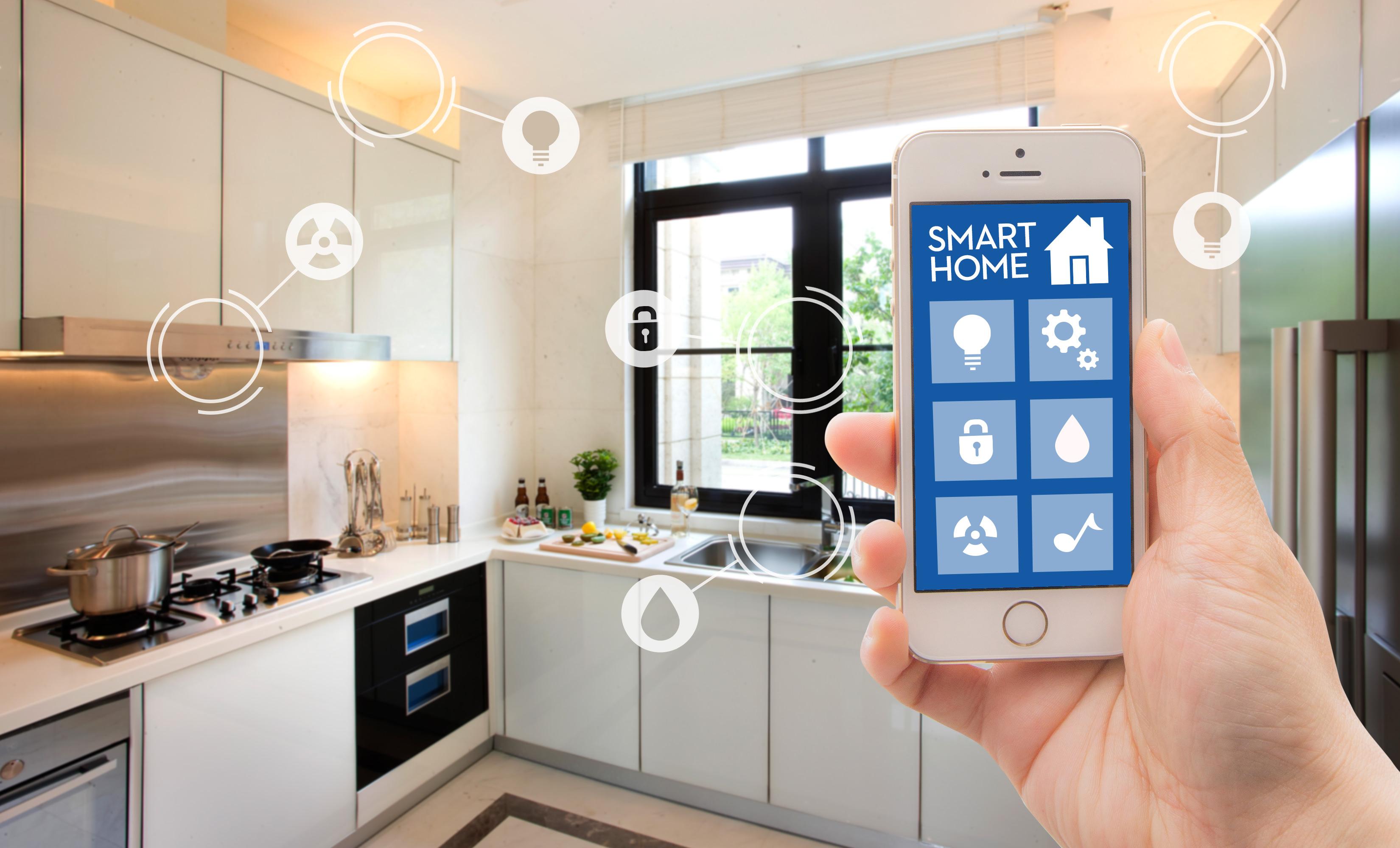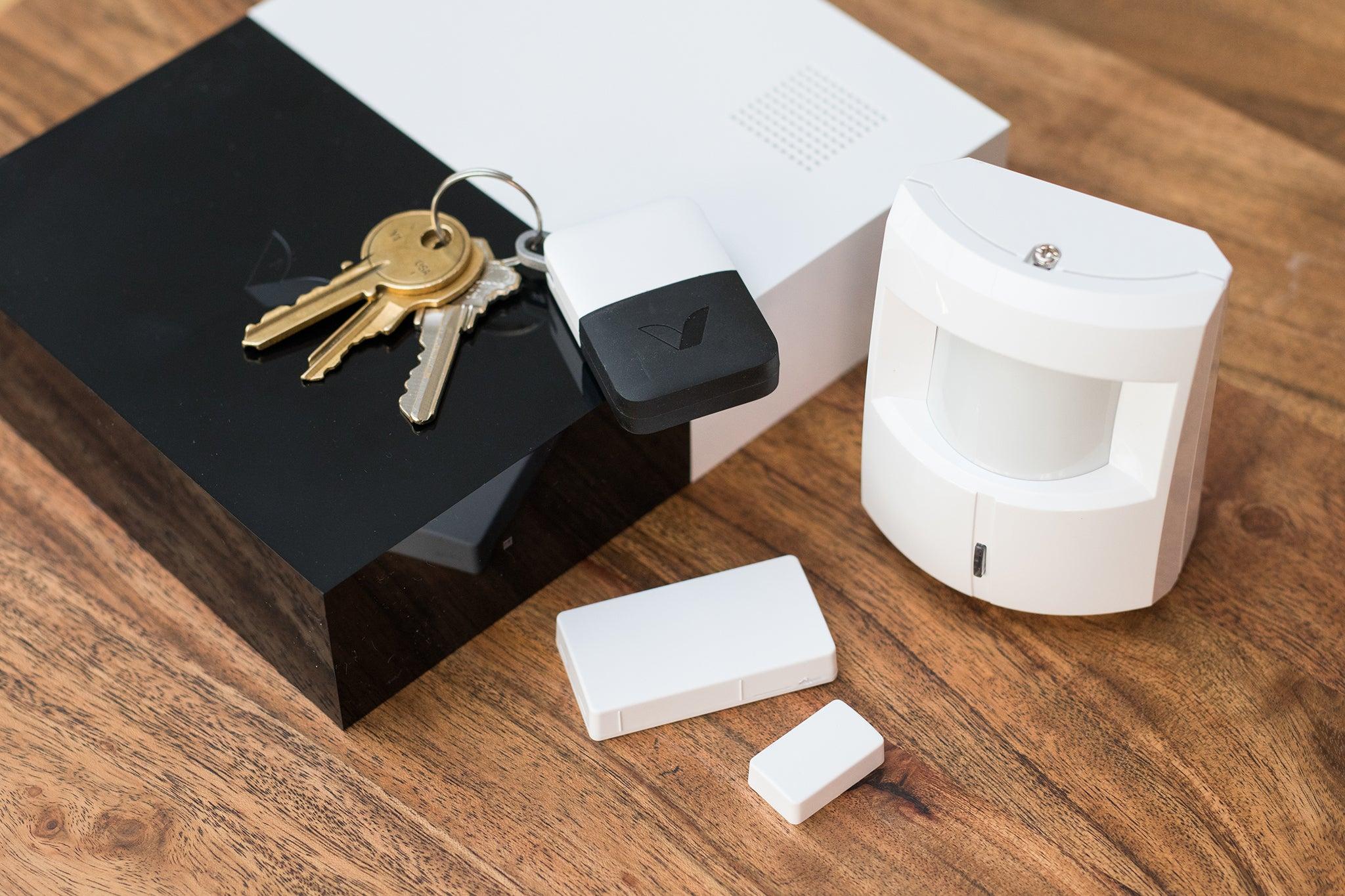In an era where sustainability and efficiency are not just buzzwords but essential components of modern living, the idea of transforming our homes into energy-saving sanctuaries becomes increasingly appealing. Welcome to “Green & Smart,” where we delve into the innovative world of home automation designed to harmonize comfort and environmental responsibility.As technology continues to evolve,the possibilities for smart homes are expanding,offering us not only convenience but also significant savings on energy bills and a reduced carbon footprint. In this article, we will explore practical tips and strategies that seamlessly integrate cutting-edge automation with green living, empowering homeowners to create spaces that are both smart and eco-friendly. Join us on this journey towards a smarter, greener home that doesn’t compromise on style or sustainability.
Harnessing the Power of Smart Thermostats for Energy Efficiency
Smart thermostats are revolutionizing the way we control our home heating and cooling systems. With their advanced algorithms and connectivity features,these devices allow homeowners to track and manage energy consumption with remarkable precision. By learning your schedule and preferences, a smart thermostat can automatically adjust temperatures, preventing unnecessary heating or cooling when you’re away. This not only enhances comfort but also substantially reduces energy bills.
One of the standout features of smart thermostats is their ability to integrate with other smart home devices. By connecting your thermostat to a smart home hub, you can create personalized energy-saving routines. For example, when you leave home, the thermostat can automatically switch to an eco-friendly mode, saving energy while you’re away. Some models even provide real-time energy usage statistics and suggestions for further savings, empowering you to make informed decisions about your energy consumption.
moreover, many smart thermostats come equipped with geofencing capabilities. This feature utilizes your smartphone’s GPS to detect when you are nearby and adjusts the temperature accordingly. The result? A perfectly warm or cool home as soon as you walk through the door. Moreover, with energy reports and alerts, you can easily stay on top of your home’s efficiency, ensuring that you’re always making strides towards a greener lifestyle. Investing in a smart thermostat is not just about comfort; it’s a crucial step towards sustainability.

Integrating Smart Lighting Solutions to Reduce Consumption
Incorporating intelligent lighting systems into your home can yield considerable energy savings and enhanced convenience. These systems utilize advanced sensors and smart technology to monitor environmental conditions and adjust lighting in real time. With features such as occupancy detection, motion sensors, and ambient light adjustment, homes can minimize unnecessary energy consumption while maintaining optimal lighting levels.
Consider implementing the following features in your smart lighting setup:
- Automated Dimming: Lights can automatically dim based on the amount of natural light available.
- Scheduled Lighting: Set specific times for lights to turn on and off according to your daily routine.
- Geo-Location Control: Utilize your smartphone’s GPS to turn lights on or off when you leave or arrive home.
| Feature | Benefit |
|---|---|
| Motion Sensors | Turn lights on when movement is detected, preventing wasted energy. |
| Smart Switches | Control lighting remotely, giving you flexibility while on the go. |
| Color Control | Customize lighting colors to enhance mood without excessive energy use. |

Maximizing Home Security Systems to Conserve Energy
Today’s intelligent home security systems are not only designed to protect your property, but they also offer innovative features that contribute to energy conservation. By integrating your security system with smart home technology, you can automate various functions around your house to reduce energy consumption. Consider the following approaches to maximize your security system’s efficiency:
- Smart lighting: Utilize motion sensors to turn on lights only when movement is detected,ensuring lights are off during non-use hours.
- Climate control: Pair your security system with smart thermostats that adjust temperatures based on occupancy, minimizing energy wastage.
- Appliance management: Control energy-hungry devices, like heating systems and fans, through your security platform to ensure they operate only when needed.
furthermore, enhancing your home’s insulation can be a valuable addition to your home security ecosystem.Systems integrated with smart sensors can monitor exterior temperatures and weather conditions, enabling you to adjust your heating or cooling preferences accordingly. Additionally,some advanced systems can alert you to changes in your home’s energy use,providing insights that help identify inefficiencies. Implementing these strategies will not only bolster your home’s security but also help you make informed decisions about energy consumption.
Effectively managing your security system can lead to remarkable energy savings. by establishing a schedule or customized rules, you can minimize power usage during periods of inactivity.As a notable example, you might configure your system to power down appliances like smart plugs during the hours when you typically leave for work. Below is a simple overview of potential savings:
| Action | Potential Savings |
|---|---|
| Automatic light shutoff | Up to 15% on electricity |
| Smart thermostat adjustments | 20% reduction in heating/cooling costs |
| Energy-efficient appliance scheduling | 10% overall energy savings |

Utilizing Smart Appliances for Sustainable Living Choices
embracing technology in our homes doesn’t just offer convenience; it can significantly enhance our commitment to sustainable living. Smart appliances, designed with energy efficiency in mind, allow us to reduce our carbon footprint without compromising our quality of life. From washing machines that optimize water usage to smart thermostats that learn your routines, these devices adapt to your habits, ensuring that energy is used only when necessary. Imagine a world where your fridge reminds you of expiring food items,helping you reduce waste while ensuring that your meals are always fresh.
One of the best features of smart appliances is their ability to provide real-time energy usage data. By connecting to your home network, you can monitor how much energy each appliance consumes through simple apps on your smartphone or tablet. This knowledge empowers you to make informed decisions about usage times, especially during off-peak hours when electricity is cheaper — and greener. Consider the following smart home devices that greatly contribute to energy savings:
- Smart Thermostats: Adjusts heating and cooling based on your preferences.
- Smart Plugs: Allows control of devices remotely to minimize energy consumption.
- Energy star-Rated Appliances: Offers efficient performance while lowering bills.
- Smart Lighting: Automatically dims or switches off when no one is around.
Moreover, integrating these devices into a cohesive home automation system can facilitate sustainable living on a larger scale. By syncing your appliances, you can create schedules that optimize energy use throughout the day and even utilize renewable energy sources when available. For instance, if you have solar panels, your smart appliances can be programmed to operate during peak sunlight hours, maximizing efficiency and minimizing reliance on grid electricity. Below is an example table showing the potential energy savings through different smart appliances:
| Smart Appliance | Average Energy Savings (%) |
|---|---|
| Smart Thermostat | 10-30% |
| Energy-efficient Dishwasher | 20-50% |
| Smart LED Bulbs | 75-80% |
| smart Washer | 30-50% |
Q&A
Q&A: green & Smart – Energy-Saving Home Automation Tips
Q1: What is home automation, and how can it contribute to energy savings?
A1: Home automation refers to the technology that allows you to control various systems and appliances in your home remotely or automatically.These systems often include lighting, heating, cooling, and security. by optimizing their operation through smart technology, homeowners can significantly reduce energy usage. For example, smart thermostats learn your schedule and adjust temperatures accordingly, preventing unnecessary heating or cooling when you’re not home.
Q2: What are some simple automation tips for beginners who want to save energy?
A2: For those just starting, consider these simple steps:
- Smart Thermostats: Install a smart thermostat to adjust heating and cooling efficiently based on your habits.
- Smart Lights: Replace incandescent bulbs with LED smart lights that can be programmed to turn off when not needed or dimmed to use less power.
- A Timer for Electronics: Use timers for devices like TVs or home entertainment systems to ensure they turn off automatically when not in use.
Q3: Are there specific devices or systems that are particularly energy-efficient?
A3: Yes, there are several devices that stand out for their energy efficiency:
- Smart Plugs: These can monitor and control power usage of any device plugged into them, allowing you to cut off power to appliances that draw energy even when turned off.
- smart Shades: These can open or close automatically to utilize natural light for heating and cooling, reducing dependence on HVAC systems.
- Energy Monitors: These devices track real-time energy consumption, helping you identify power-hungry devices and optimize usage.
Q4: Can home automation increase the overall sustainability of my household?
A4: Absolutely! By incorporating smart technology, you can monitor energy usage, adjust consumption patterns, and make informed decisions about your energy habits. Additionally, many systems allow integration with renewable energy sources like solar panels, enabling your home to operate more sustainably. The ability to track and adjust your energy use helps you lower your carbon footprint while often saving money on utility bills.
Q5: What are the costs associated with implementing home automation for energy saving?
A5: The initial investment in smart devices might seem high, but many products are designed to pay for themselves over time through energy savings. Costs vary widely; you can find basic smart plugs for as low as $15, while advanced automation systems can run several hundred dollars. It’s essential to assess your specific needs and budget,focusing on devices that offer the greatest return on investment in terms of energy efficiency.
Q6: How can I ensure that my home automation system remains energy efficient?
A6: Regular maintenance is key to keeping your system functioning optimally. This includes:
- Software Updates: Keep your devices updated to benefit from the latest efficiency-enhancing features.
- Review Settings: Periodically evaluate your automation schedules to align them with your current lifestyle and seasonal changes.
- Monitor Usage: Utilize energy monitoring tools to track usage patterns, helping you identify areas for further optimization.
Q7: What other benefits does automating my home offer beyond energy savings?
A7: In addition to reducing energy costs, home automation enhances convenience, security, and comfort. Automated systems can streamline your daily routines— from adjusting lighting to fit your mood, to ensuring your home is secure while you’re away. Furthermore, many energy-efficient technologies contribute to a healthier environment by improving air quality and providing more detailed insights into your home’s energy use.
Conclusion: Embracing green and smart home automation not only leads to energy savings but also elevates your living experience. Incorporating these technologies will take some initial effort, but the long-term benefits for your wallet and the planet make it well worth considering!
In Retrospect
embracing home automation not only enhances convenience but also paves the way for a greener future. By implementing these energy-saving tips, you can transform your living space into a smart sanctuary that actively contributes to environmental sustainability. Each small adjustment, from smart thermostats to energy-efficient lighting, plays a vital role in reducing your carbon footprint while optimizing your home’s efficiency. As we navigate the intersection of technology and sustainability, remember that every step towards a smarter home is a step towards a healthier planet. So, take the plunge, embrace innovation, and let your home be a beacon of eco-conscious living.
